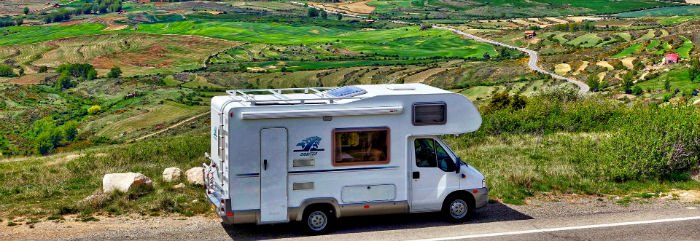Looking after your motorhome battery

According to the AA, a staggering 25% of call-outs for motorhomes are related to battery failure. Many of these call-outs could be avoided with a little understanding of battery care, so you can enjoy your adventures without any interruptions:
- Start the engine at regular intervals: If you’re looking to store your motorhome on your own property, then a regime of regularly starting the engine, perhaps twice per month for about 45 minutes, should keep the battery charged throughout its period of inactivity.
- Trickle charger: Alternatively, you can periodically connect the battery to a trickle charger, which can be left on without fear of it overcharging and therefore damaging the battery. This will keep it at its optimal charged level.
If the motorhome is to be stored away from the home and an electrical hook-up to enable trickle charging isn’t possible, then regularly starting and running the engine is essential.
A voltage meter across the battery terminals will tell you if the battery is being charged enough by the engine run – ideally, it needs to show 12.7 volts or over.
- Avoid freezing your motorhome battery: Commonly, a motorhome will be kept in long-term storage and the opportunities to start the motor are limited. The best option in this scenario would be to remove the battery and keep it at home on a trickle charge. Doing this would also negate the threat of the battery freezing during those cold winter months, which is something that could potentially cause damage. Always bear in mind that batteries which are kept charged are unlikely to freeze.
- Don’t overcharge: Another threat to your battery is the damage caused by overcharging. Using a balanced charger will ensure the battery is not overcharged by cutting down to a trickle once the optimal charge level is reached. Chargers which are just ‘on’ all the time will boil the electrolyte (the de-ionised water you use to ensure the plates in the battery are covered) dry, leaving the battery prone to freezing.
- Vaseline: No, we haven’t gone mad! The final tip is to inspect the battery terminals for corrosion, and to apply a smear of petroleum jelly, which should help prevent corrosive build ups by keeping moisture out.
Now you know how to care for your motorhome battery
For those who have experienced it, there are few more frustrating things for a motorhome owner than jumping in your vehicle at the very start of the season, turning your key and feeling your heart sink as nothing happens!
While following these steps won’t guarantee that your battery won’t let you down, they will certainly help cut down on those pesky problems and give you greater peace of mind.
Sources

